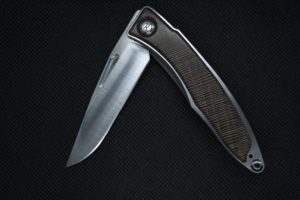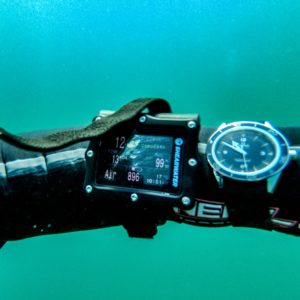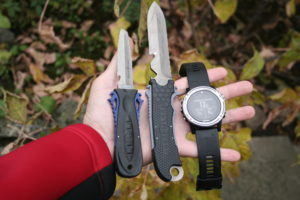A note about this article: this article is aimed at those who for their own reasons seem to like watches to the point where it plays an important part in their lives. This being either through employment, or that of a hobby which somehow had at one point started to take up a sizeable portion of the person’s free time. For others, this is a window into consumer products and how they entrench themselves into our daily lives.
An occasional occurrence amongst enthusiast groups online or in physical get togethers is one person not liking what someone else loves, simply disregarding its value. When asked why they have done so, they always struggle to articulate as to why exactly.
First, we are going to set aside the all too common reaction to such reactions as the person only liking products which are expensive and only convey a sense of status. This being an item ranging from a watch, knife, pen, kitchen pot set (yes, this happens as well), yoga mat, or a car, not meeting a certain status, they are then thus automatically written off as junk. These individuals do exist, but it is often a lazy and defensive reaction on the the part of those offended, and who does not bother to look at the matter at hand. We are also going not going to pay any attention to the notion that “art is only a matter of personal opinion, and different for everyone.” Again, this is a just a cognitively lazy way of cutting the discussion short.
Second, we will look at how art, design and intent of use comes into play and how a product is elevated in a consumer’s eyes from a basic tool, to something that is art, or has artistic value. It has often been said that photography has never been an art form when compared to painting, and that this is the case especially now with the advent of smartphone technology. This may be true for those who are simply trying to capture a moment, but this is again a cognitively lazy way to approach a topic. We have evolved and are built to be cognitively lazy for it is efficient and it allows us to move onto other topics and tasks. If a person is using a smartphone to take a set of photographs, spends time composing the scene through props, lighting and a thoughtful subject matter telling a story, it is then obviously art through its effort and intent. There was an explicit attempt to make product or work of art, and this has inherent value.

The Chris Reeve Mnandi
The same can be said for knives. Where many people only view certain knives as worthy of being collected and used, there are an entire field of tools which are brushed off by these consumers as just an item not worth considering. This is the case with pocket knives that start ranging in the hundreds of dollars and eventually make it into the thousands. Here is where we shall start to draw the comparisons between such products and watches and see how they can be indeed be art, even if you do not consider this to be the case.
Our fist case will be a $600 Mnandi production knife from Chris Reeve knives and the $220 Benchmade Triage Rescue Knife with the Opposing Bevel Blade. When presented with these two knives, some enthusiasts within the field gloss over the Triage and simply focus on the Mnandi, and to be be fair this is understandable. The quality of workmanship and effort put into the aesthetics of this knife are simply higher than that of the Triage. When asked what they think of the Triage, some have said that they think it is “junk” while others simply said that they don’t get it and that it is not for them.

The Benchmade Triage Rescue Knife Multitool
Others however who are knife enthusiasts and work in emergency services, or are emergency first responders have a different reaction. They first look at its features such as the blade shape, the emergency hook, the practical glass breaker (it simply being useful and not so sharp that it would actually cause damage in daily use), the highly textured G10 handle scales and they all said the same thing, “this is beautiful.” They see the product’s usefulness and how effortless they are to use in the field as a functional art. It is in using these products and that a well design example allows the usr to focus on their at times life endangering and saving tasks where a very great sense of appreciation starts to evolve.
When the consumer highly values an aspect of their lives such as first aid training, an active lifestyle (more on this when we discuss watches), or driving fast and the engineering involved in a car being able to do so, this is where some see art and others simply refuse to do so due to being cognitively lazy, or due to personal reasons. There are many people who have looked at a Porsche 911 from 1994 and a brand new 2019 model and simply said that they do not get it and that the car is just for rich people who want to flaunt their status. Enthusiasts however note every microscopic change the designers and engineers have made at Porsche over the decades to refine the product and to make it a better performing vehicle and thus a work of art – sometimes at the cost of aesthetic features such as exhaust note with turbo charged engines and steering feel with the loss of hydraulic steering in favour for electronic steering. The design features that are governed by the laws of aerodynamics also tend to make a vehicle seen as either graceful/brutal (Porsche 911/Nissan GTR) or beautiful.
Within the field of watches and that of the enthusiasts occupying this space, smartwatches and to a large extent, digital watches fall under the same level of discrimination that our knife example did – with an exemption being that of G-Shocks which receive an astronomical amount of nostalgia.
When presented with higher end smart watches, horology enthusiasts who affectionately call themselves “Watch Idiot Savants” or WIS for short, nearly have an allergic and violent reaction when presented with one of these products. This reaction has been observed with every generation of the Apple iWatch, and higher end offerings from Polar such as the V800, and Garmin with their Fenix and Descent series of watches. Just as in the knife example above, those who value an active lifestyle to the point where it occupies a significant amount of their lives, they tend to see the efforts and design implementations of these products. Overtime they see these design features that are functionally driven to be aesthetically pleasing as well, and thus a form of art which is missed by those who do not share their values.
Pictured here are watches that represent this point in varying degrees and serve to prove that art and what makes a watch beautiful is truly something that is up to the design and should not be turned down by someone if they do not immediately see this.

The Omega Speedmaster
We have an Omega Speedmaster which was originally designed to be an extremely legible chronograph for race car drivers and their co-drivers. Its stark design and high contrast dial and eventual asymmetrical case shape serving the purpose as crown guards were simply implemented for utility. Now as many decades have passed since its initial design, and that Omega have spent hundreds of millions of dollars into the marketing behind this watch being used by NASA for the space program, many enthusiasts love this watch and consider it to be one of the most beautiful “tool-watches” ever designed. We also see a reissue of an Omega Seamaster 300 which obviously draws on the original’s utility driven design. These design points now are seen as aesthetically beautiful and demand a premium over utility. Such as the vintage coloured luminescent material being less functional but more pleasing to the consumer and their sense of romance and nostalgia for these watches. These watches which initially were tools which are now obsolete, and serve as jewellery and cost hundreds of times more than they did when they were initially offered in the market.
When the group of enthusiasts who appreciate such watches to the point of spending a large amount of money on them are presented with smart watches, they usually react negatively. By “a lot of money” I am using the phrase in relative terms to food and basic groceries. This being where one of these watches can pay for half a year of groceries for a single person household in North America.

The Omega Seamaster 300 Master Co-Axial
Due to valuing the craftsmanship, romantic past and history of these watches and investing a disproportional amount of time on the subject, they tend to reject these new products. Some do so for they feel that smartwatches are a direct threat to their hobby existing in the future as obsolescence keeps encroaching on their passions Others do so again because they are cognitively lazy and have no desire to see such products as something that required a lot of industrial design and that could be considered art.
As a bridge between watches that many consider to be pieces of jewellery and modern tools such as smartwatches, we shall take a look at the Seiko SBBN025 dive watch which was designed simply to be effective at extreme depths. Eventually it was also designed to withstand large amounts fo shock and anti-magnetism when quartz movements were introduced as seen here in this model. The original Seiko Tuna was introduced in 1975 which is over 40 years before the time of this writing.

The Seiko SBBN025 and the Shearwater Perdix Dive Computer
Seiko has taken this brutal yet beautiful approach of the circular case being covered by a shroud of this tool and made it into a fashion item. They have incorporated it into many of their lesser expensive watches which are targeting more fashion oriented consumers who value a tough look as they do in Casio G-Shocks, and who alos are drawn into the romanticism of tools used in the past.
Now we shall take a look at two products from Garmin which are modern tools used by athletes, divers, those in the military and by outdoor enthusiasts. The first being a basic $180 GPS waypoint device known as the ForeTrex 401 and the other being the $1200 Garmin Descent Mk1.

The Garmin ForeTrex 401
The ForeTrex is a beautifully stark product that only serves its purpose and this is evident in its minimal design and layout. This is obviously not a watch for though it does tell the time, it does so within its menus and is not easily accessible, or is it the device’s primary function. The Descent Mk1 however is definitely a watch for the time is always on display, and since it is fairly more expensive, it has many design features that help make a beautiful piece of industrial design, and thus art for those who value these design cues in their daily lives. The simple bezel, implementation of the precise sapphire crystal, functional lugs that are not only functional for charging purposes, but are also designed to make this large watch more wearable. The manufacturing and composites used of the entire watch, including the buttons and their actions easily rival those of luxury watches. These watches are also works of art, for their brilliantly function driven design is so well executed that the efforts of the designers easily mirror those who designed the Omega Speedmaster. Using the Descent, Fenix or Forerunner Series by Garmin while either exercising or scuba diving is easy and a joy to use. This is true for not only are the materials and buttons of high quality, but also for its software allowing us to focus on our task at hand.
One element that is introduced on these modern devices that did not exist on products such as watches and vintage cars are the ever present Graphic User Interfaces (GUI) required to operate these products.

The Garmin Descent Mk1 alongside some dive knives from AquaLung
As a result, we see a field of smart phones that all look alike from a distance due these devices so heavily relying on touchscreens. We see many manufacturers flex their industrial design muscles on what they can such as camera implementation, case and bezel designs, but this is also something that smartwatches suffer from as well.
For those smartwatches such as the Apple iWatch which rely on touchscreens, it is all too easy to dismiss their designs as “soulless” and not artful, but once again, this is a cognitively lazy method of approaching the topic. Graphic User Interfaces utilise artful designs to make the user experience appealing and are very important. If the consumer does not find a product a joy and easy to use, they will look elsewhere. The cases and materials used by these products suffer form the same pressures and this results in very beautiful and artful products. This simply occurs on a different scale than a finely hand or machine finished mechanical watch movement.
The next time that you are presented a product such as a smartwatch which someone else says that they like and that they consider it beautiful, you may want to approach the next few sentences which leave your mouth more carefully. Instead of automatically saying that it is not for you and that you see no value in its design or existence, ask them why they like the product so much. Also keep in mind that the products that you value so much and fetishise were once just tools as well. When doing so, you will reveal not only what makes this product interesting, but more importantly what makes the human standing in front of you fascinating. You will gain a glimpse into a window of what this person values and potentially the road which they took to do so. This is where the greatest value of art and design in consumer products exist. They reveal the wide range of the human experiences in which we all can not possibly cover in one lifetime, and this is worth celebrating.
– Time of writing December 1st 2018
– All prices in Canadian Dollars